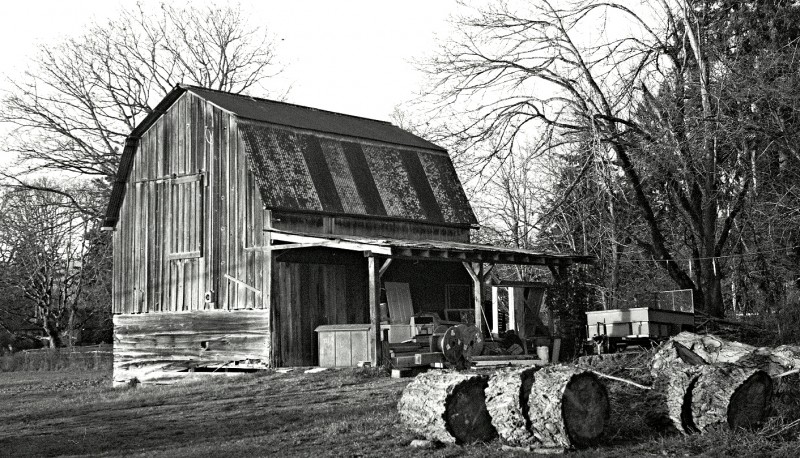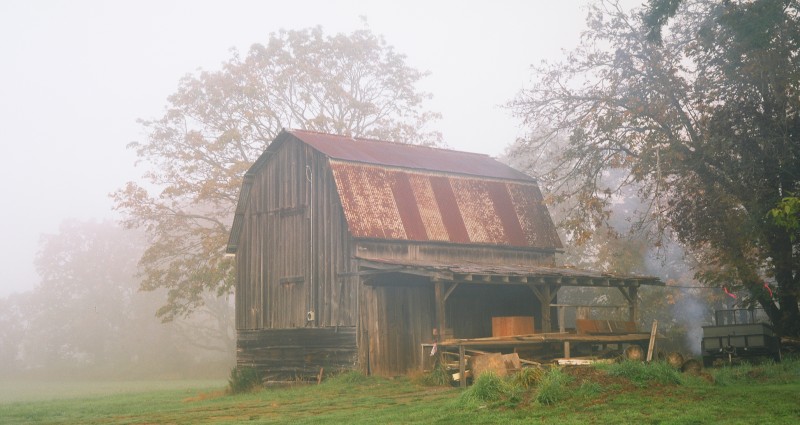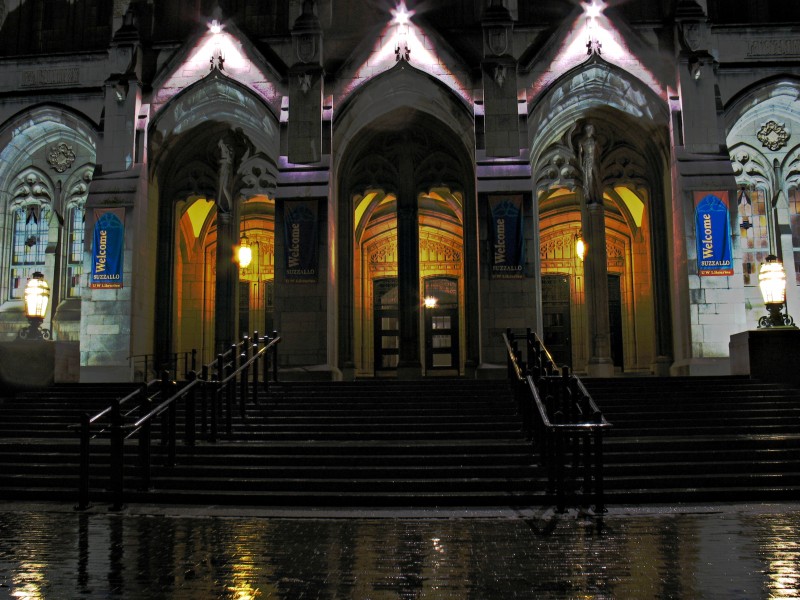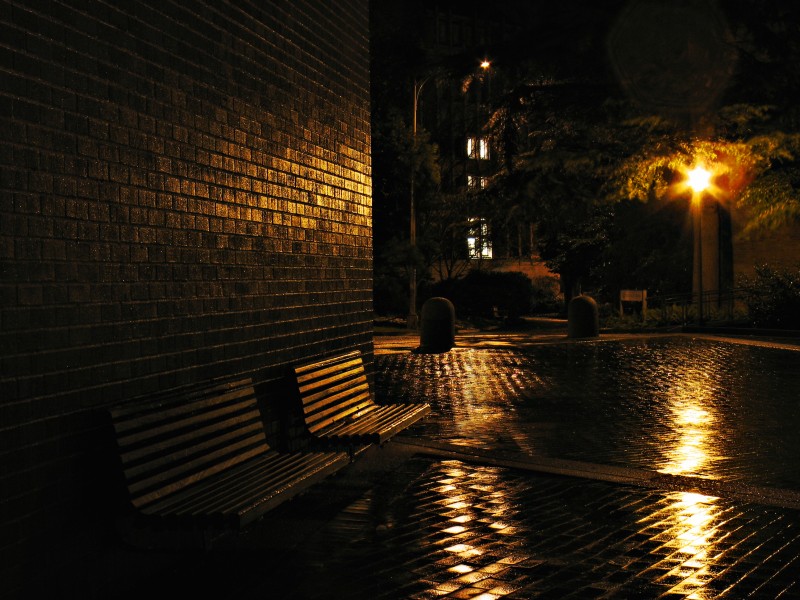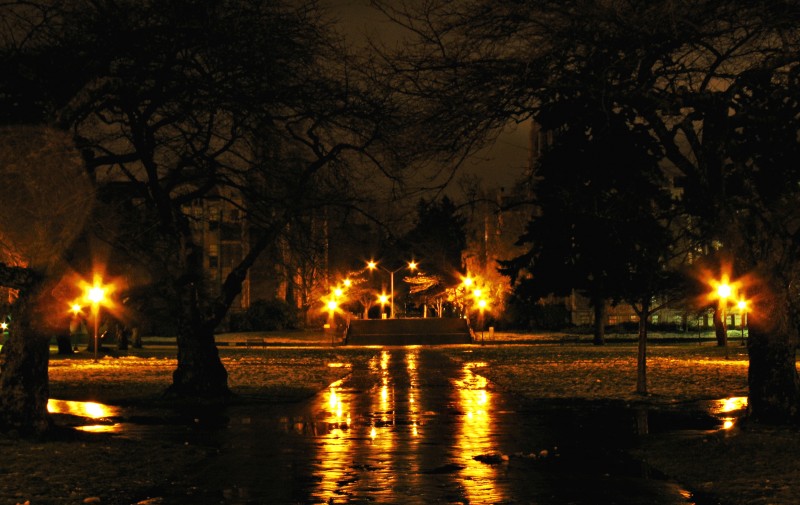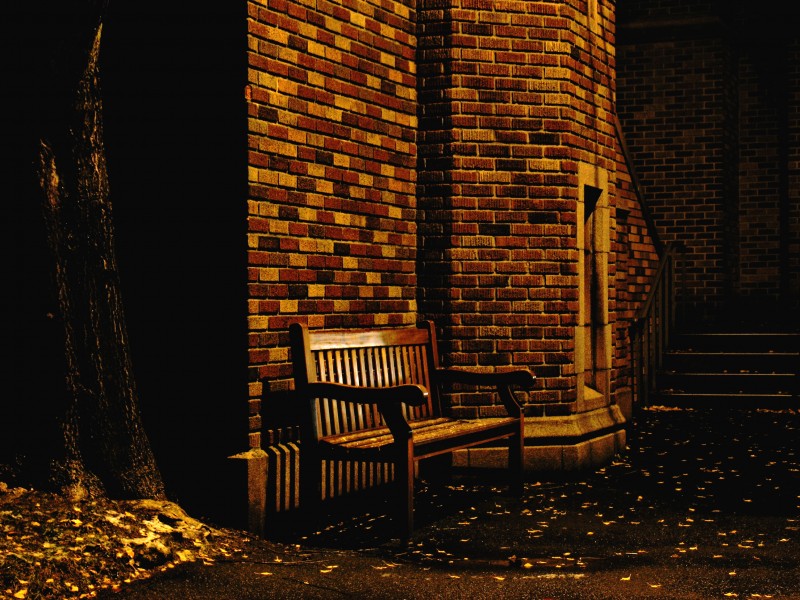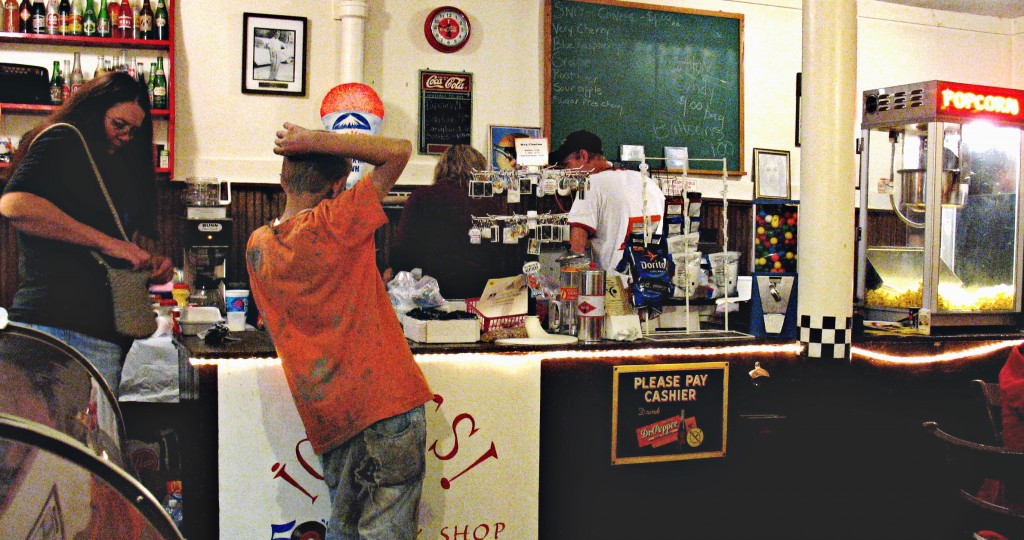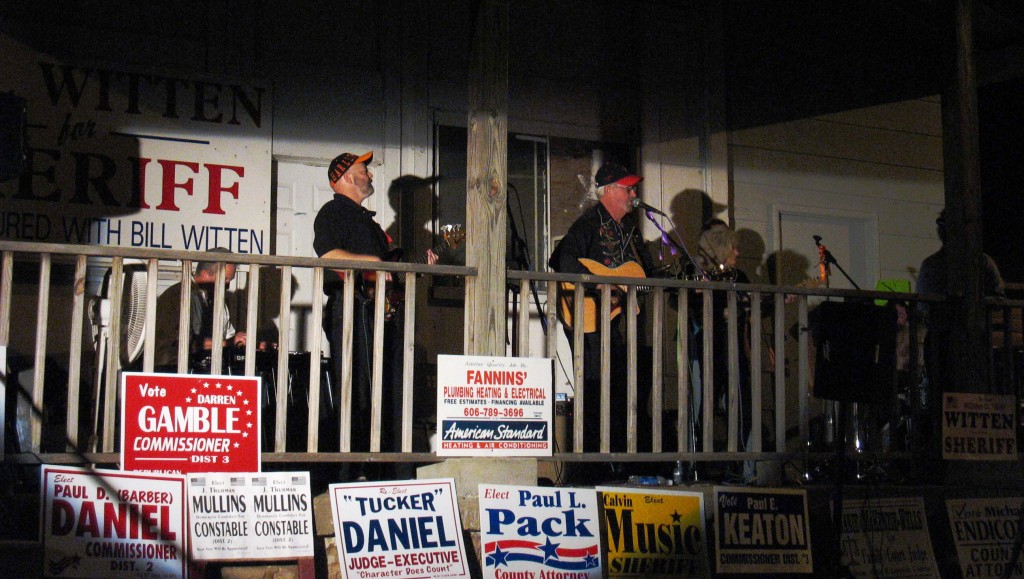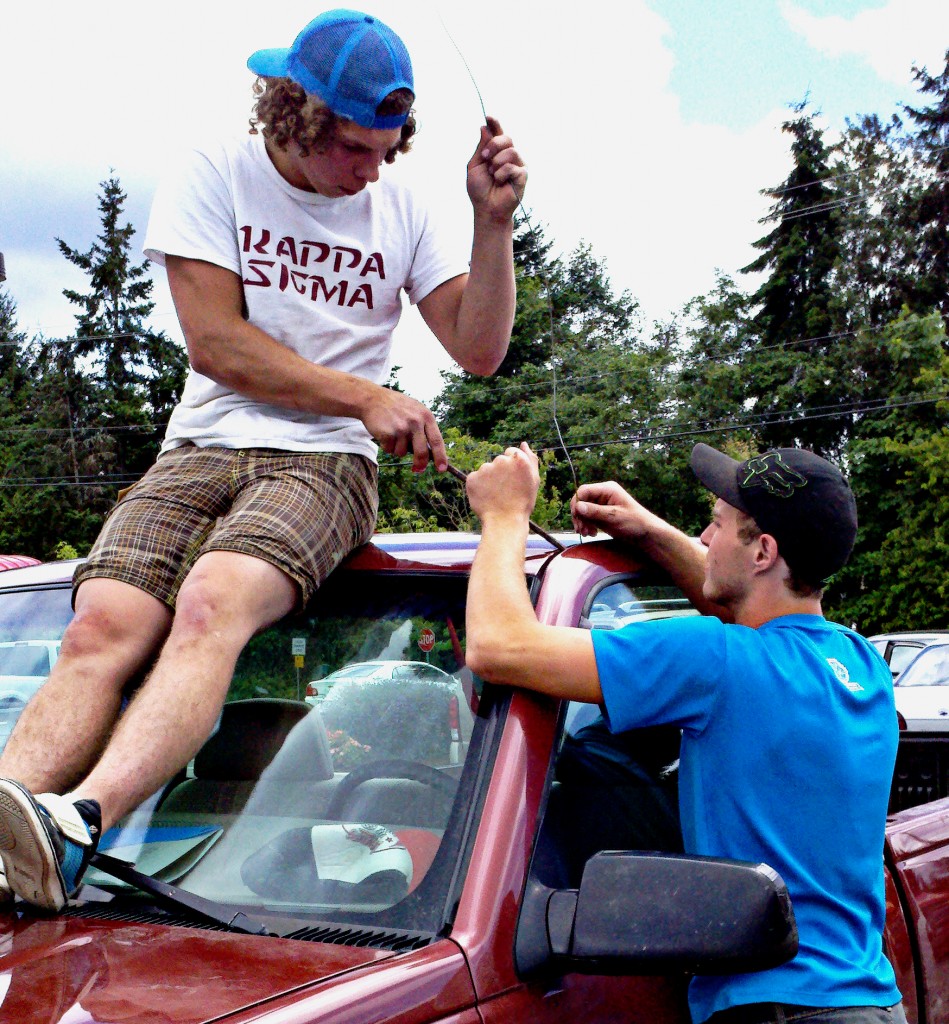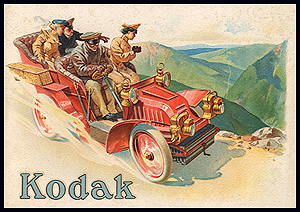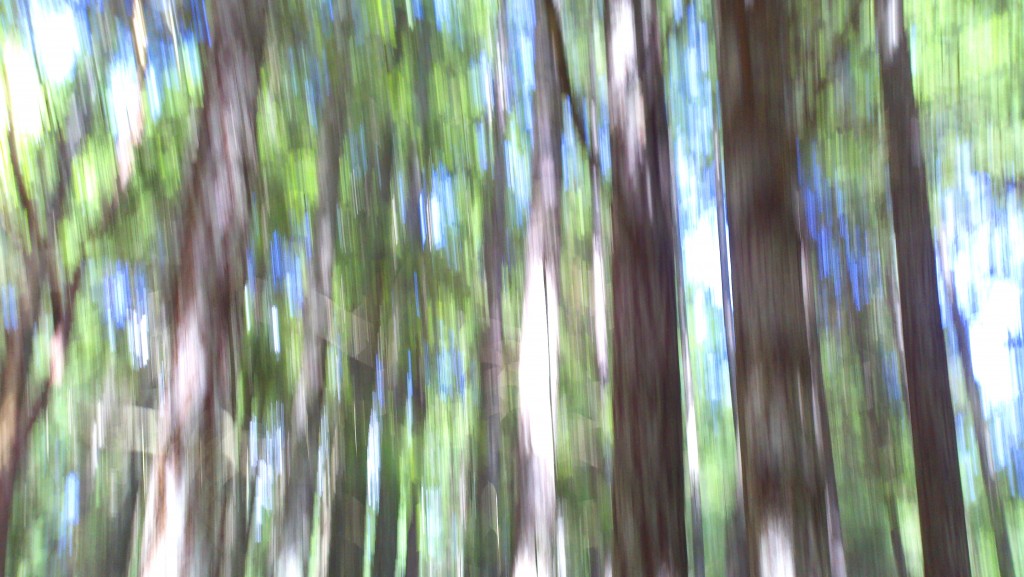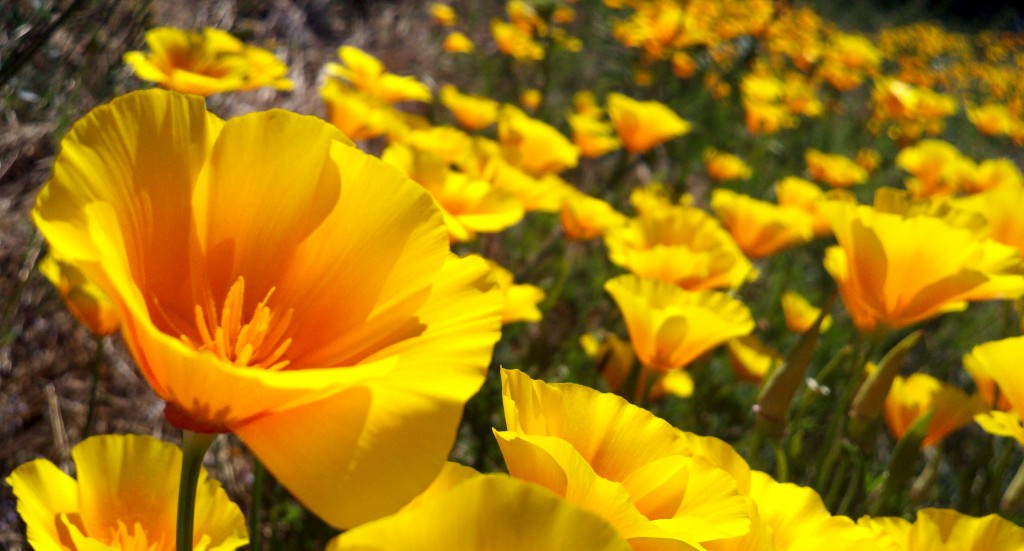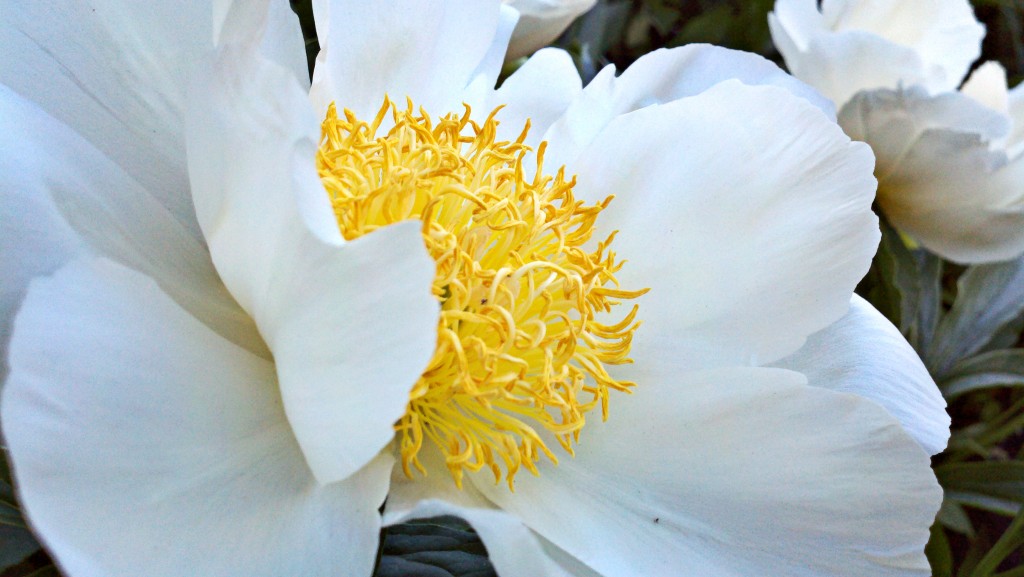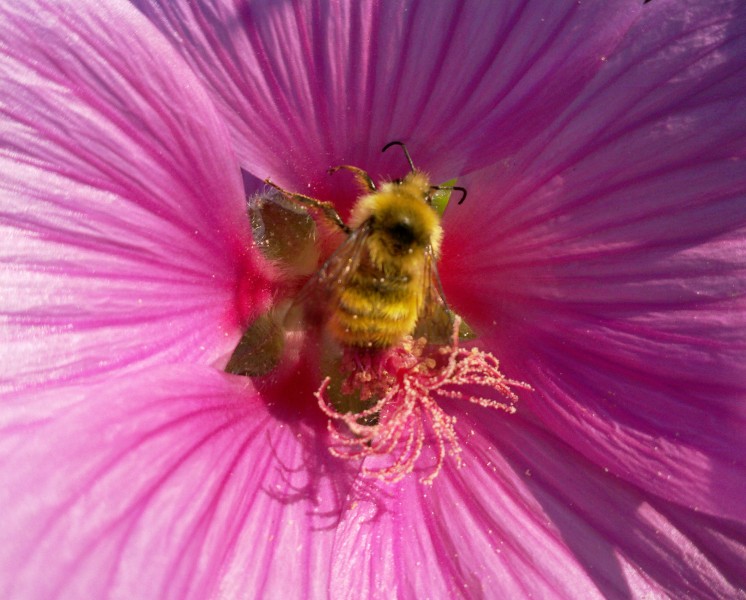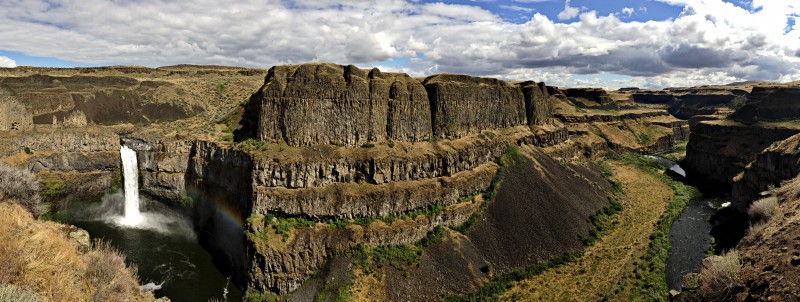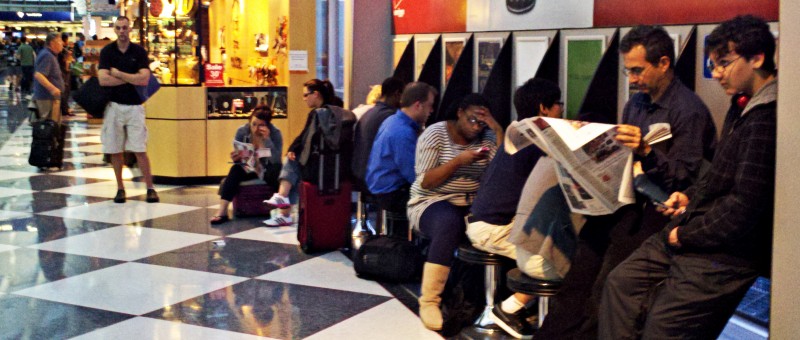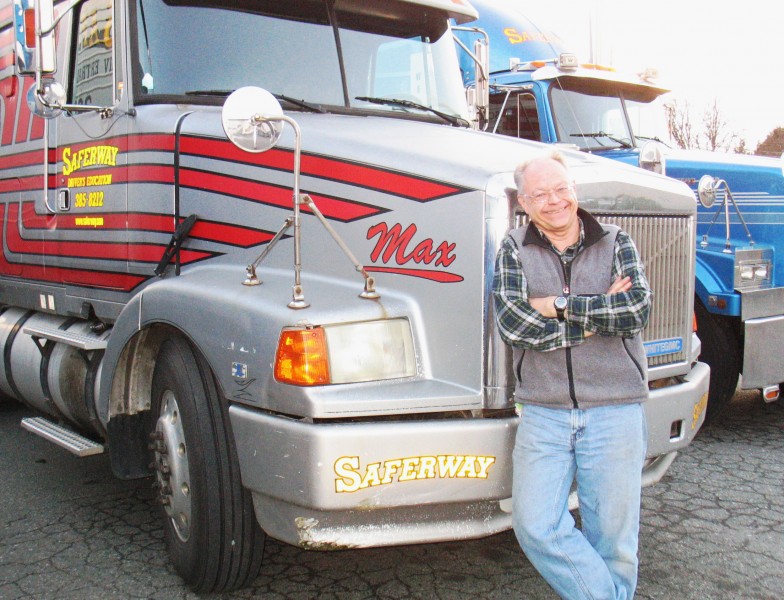
Rand and Maxie
Imaging driving a 1956 all-steel Cadillac with a little Austin engine and an eighteen-speed transmission down a tiny country road filled with milling sheep.
Add in a transmission with six gears (including reverse and ultra-low), a ranger switch in front of the knob that that shifts everything into a high range, and a little slider on the side that cuts each gear in half. Plus an interaxle lock switch and a rear differential lock switch (for snow). Together with as many dashboard switches as a Piper Comanche. Stir in the cyclist who yesterday zipped six feet in front of my truck as I was turning off the highway. That’s life in the slow lane (or very slow lane up hills).
That’s learning to drive a 60-foot, 50,000-pound truck and trailer through downtown Victoria traffic. I am learning on a big Volvo/GMC truck named “Maxie” whose Caterpillar diesel is only happy between 1200 and 1700 rpm. I go through four gears before most drivers are out of low, and double-clutch both up and down (no synchromesh). Once I have learned all the skills needed, I may reward myself with one of the dump trucks for sale in ontario that really caught my eye when I was browsing online recently. Long way to go at the minute but I’m confident that I’ll have the skillset soon enough.
Yes, I have a new adventure. Confirming that there is very little call for my many but general skills here, I enrolled in Saferway Driver Training School, the Island’s best commercial driving school, and am spending my days in a full-size semi truck and trailer. When my training is finished and I have my license, I am heading to a camp in Alberta’s oil patch to drive heavy trucks. There’s a reason that I’m going to a driver training school, and that’s so I have less of a chance of causing an accident. I know that driving can be dangerous, I also know that no matter how careful I am something is likely to happen. As a side note, if you are ever involved in an accident with a truck then it might be a good idea to get yourself a lawyer to help you with filing a lawsuit. If this is something that you are thinking of doing then you could check out someone like these truck accident attorneys North Carolina. As well for security reasons or if an accident were to happen, you could visit BlackBoxMyCar to get the best dash cams for your vehicle.
Trucking is immensely hard work, and I am managing to stay fit with climbing into and out of a high cab, and sliding wormlike around under the truck and trailer for morning inspection – also about as extensive as the preflight for a Comanche. It is a complex trade, with many things to do at once – watch the road, interpret many warning signs that I ignored in a car, watch the trailer as I swing wide on corners (taking up all lanes of some small residential Victoria streets). The hardest thing is to just coordinate everything into a smoothly coordinated whole.
It has had its rough moments, but I am actually having fun. I am entering a fascinating culture with many quirky characters and possibilities for fellowship. My instructor, Larry Hurdle, sports an exuberant mustache and possesses an inexhaustible store of both trucking knowledge and stories from his years as a logging truck driver.
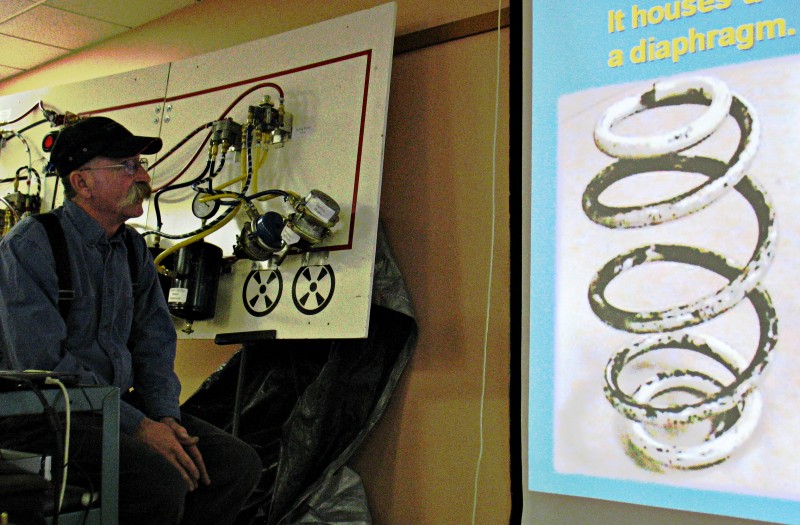
Air Brakes Day- Larry and the Spring Brake
Lessons are peppered with stories of absentminded One-Chain Jack, who forgot to chain up on a snowy road, running his truckfull of logs off the road and over a bank. Deciding to cover himself by chaining up after the fact, he was discovered with one set of chains on the wheels high in the air, pondering how to attach the other set to the other set of wheels buried in the mud. He was dubbed “One-chain” on the spot, and never lived it down. This same miscreant, a heavy smoker, once burned up a load of prime shingles on the truck and noted that it was “…probably a spark from the stack (exhaust)…” Another chainless day Jack removed a front axle assembly sliding down a mountainside and into an abandoned logging road, missing the snow-filled ditch the company had dredged across the road.
Air brakes days: Consider a plate of spaghetti loving arranged by a cocaine-crazed kitten. Pepper liberally with valves, couplings, air tanks (Supply, Primary, and Secondary), and hand valve (“The Spike”), red and yellow dash buttons,”S-cams”, and mine-shaped air chambers that can crush a ton of pressure onto a brake drum. Over two days, Larry weaves us in and out, up and down through the maze. Old trucker stories: “In the worst cold, the air valves used to freeze up, so we soaked a rag in the fuel tank and lit it under the valve to thaw it. Except one day, I dropped a rag into the tank and didn’t know it until the truck began stalling every time the fuel was low because the rag would float over the fuel intake. After we figured out what was wrong, I fished out the rag and bought a little propane torch for the valves. The truck ran better too.”
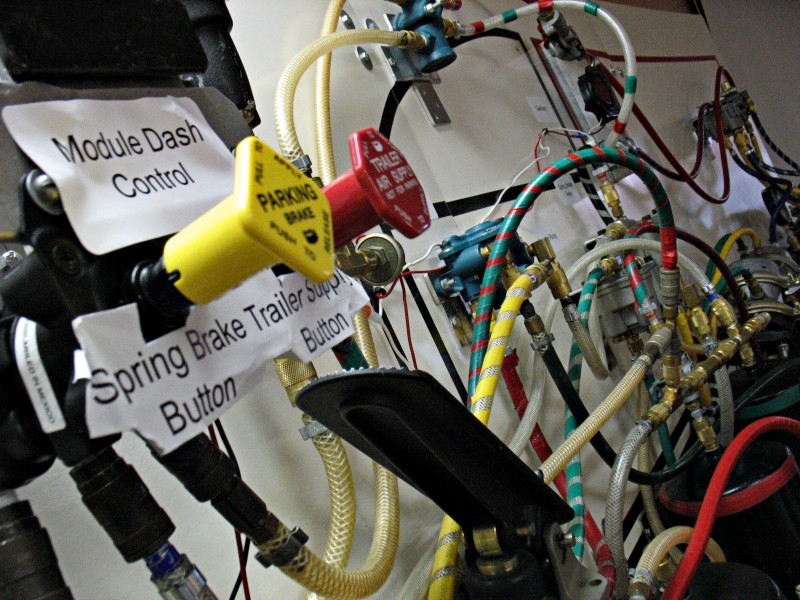
Air brakes- Valves and hoses, valves and hoses
Life-saving tips: Overbraking on long downslope ( i.e., the way most of us drive, holding brakes on down a hill) can heat brakes red-hot, causing drums to expand and lose contact with the pads. Larry says, “If your truck brakes fail on a downhill and all you have is your trailer brakes, don’t just pop the red button and lock the parking brakes on… You’ll die. Lock the brakes off and on, off and on. You’ll have a rough ride, but you’ll make it.’ We all listen intently.
“Drive shaft – no excess play!” “Brakes – spring over service, automatic slack adjusters!” “Push rods – travel adequate!” I pull myself along caterpillarlike under the truck, stomach barely clearing the differential, grit falling on my face. What do fat truckers do? I bang on air bags and tug on lines and shock absorbers, barking out the inspection steps like a Marine trainee on a parade ground. “Kwitcher complaining!” Larry bawls affectionately as he paces me, “I kin hear you huffing and puffing from out here!” I finally haul myself out from under the rear of the trailer, pulling myself under the Honda Bar (a sort of reverse cowcatcher, meant to keep those perky critters from mashing themselves under the trailer). Pulling and tapping and delving from the front of the truck to the taillights, I’ve timed compressor build time, emptied tanks, banged tires (proper inflation pressure has a sound – no time for a gauge). You do not simply climb into a truck and drive away! I’ve learned to back up a semi to within a half-inch of alignment for the kingpin on the trailer, hauled myself up and down from the cab a hundred times, hooked and unhooked air lines, and come to know the sound of the big diesel when it’s happy.
Sometimes this all seems overwhelming, especially at 65 – this old dog is definitely being forced to learn many new tricks – but it is an adventure at a time when many my age are racking up TV time, and I am fortunate that I am fit enough to do it.
I am getting a lot of positive feedback from friends and acquaintances about this enterprise. Once I get over my angst about not using my training, I start to realize that I am embarking on an adventure, and I’m getting a great deal of support, both from Janie and others in my world. This morning, I spoke to an attorney friend he said that he rather envied me! That really made me stop and think! I am doing something unusual.
UP THE MALAHAT – FIGHTING THE GEARS:
Shifting gears on 60,000 pounds of truck and trailer is an art. Not the dreamy, let’s-see-where-it-lands emotionality of the French Impressionists, nor Picasso’s disjointed connection with the moment. And definitely not Jackson Pollock’s exuberant splashes of paint from a ladder. More like the delicate touch of the English miniaturists, or the Precisionist movement of Edward Hopper and Georgia O’Keefe – economy of movement with every stroke connected with the last and anticipating the next, and no time for sloppy plunges of the foot or hand.
The basics mastered, a light trailer is paint-by-numbers. Tuesday, we glide around back streets, the gears slipping one to the next with a minimum of grinds and complaints. The day is sunny, the cherry trees lining Victoria’s harbourside coyly expose touches of blossom, and life is good. Even MacKenzie Avenue’s gridlock seems benign as I make my way home, glowing with satisfaction despite aching knees and muscles that feel like warm spaghetti.
Yet enter only part way into the real world of trucking, and the cracks in my technique become glaringly obvious. The next day, a March storm batters the island; ferries huddle in their docks, my office lights die to the blue-flared wump of an exploding transformer, and fir branches fill the air like snowflakes. With only a moderate load of concrete blocks on the trailer, we pull out of the yard into sleet for my first experience of the Malahat’s twisting mountain highway.
I must be in an alternate universe; the laws of physics, at least with my right hand and left foot, are gone. Someone has moved third and fourth – they’re not where they were yesterday. And low keeps creeping into the spot where second lived on Tuesday. Uphill, shifts need lightning speed as the load of concrete pulls Maxie back and speed drops when the diesel stops pulling. Downhill, those enormous blocks spin the rapidly-accelerating driveline , and my hands and feet must match spinning teeth and shafts as we descend. My mind fails to connect revs and kilometers with muscle and nerves, and I miss a shift. As I flail my right hand to connect a gear – any gear – Larry barks “Clutch!” and deftly pulls the gear lever into third. Maxie falters and then growls to work again.

Eaton Fuller 18 Speed Transmission Shift Pattern
However, some things go well. I have my first experience of the “Jake”, or Jacobs engine brake. As we slide around the snakelike curves from the summit, the Jake’s machine-gun rattle holds us steady with only the lightest touch on the brakes as Larry gently feeds me tidbits from his library of life experience of engines and steel.
We weave down the narrow track to Mill Bay as I turn off the engine brakes and practice “Stab” braking – on and off, on and off, watching the speedometer and tachometer, holding our descent parameters in a narrow range, yet never letting the brake pads touch the drums longer than absolutely necessary. Finally reaching the choppy steel gray of the sea, we pull off on a gravel strip beside the waves as gusts batter the truck. The wheel hubs are barely warm.
As I brace against the wind, Larry hugs the shelter of Maxie’s radiator. “Spend much time in the North, and you’ll discover that this is the only spot that’s warm.” Hmm – more advice from an old hand. Images of cowboys trapped in Wyoming blizzards shooting a cow and surviving within the warm carcass flash through my mind. Next time I’m lost in the wilderness, find the nearest Kenworth and drape myself over the hood?
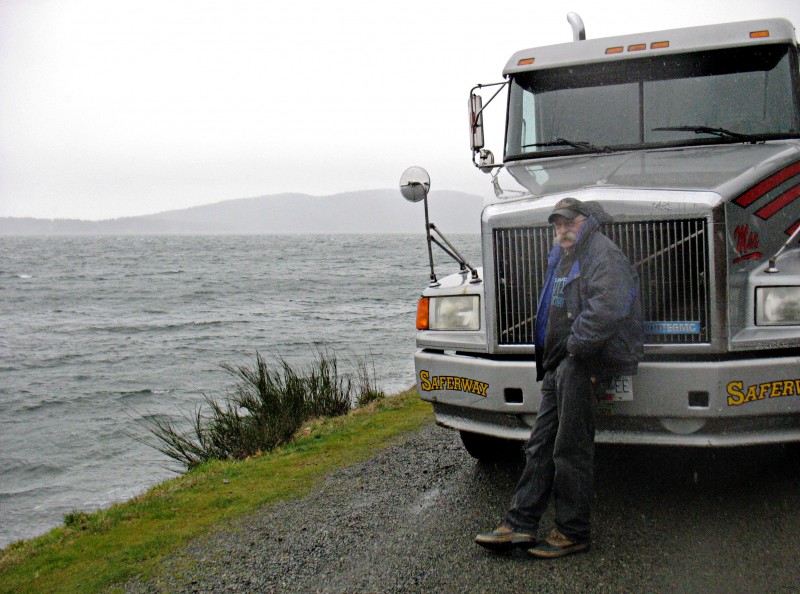
Keeping Warm at Mill Bay - Maxie and Larry
I definitely have much to learn. It could be worse, however. Twisting through the lower reaches of the Malahat, downhill grade, two narrow lanes with a slim barrier on the left and ragged rock wall on the right, Maxie holds us steady in fifth with the Jake rattling. “Can you believe I once went down this whole stretch with a student in neutral with no air for the brakes?” Larry reminisces. I twist the truck left and right, left and right through this narrow chute and think about a terrified student gripping the wheel. Nerves of steel. I could not do what Larry does.
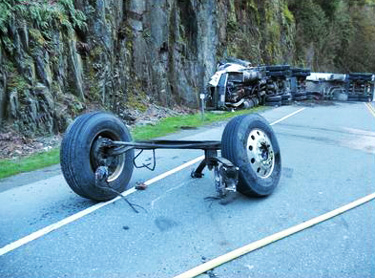
Malahat, April 17, 2011 (Courtesy Victoria Time-Colonist)
Back in the yard, we put the truck away: I crank down the landing gear, uncouple the glad hands and hang up the hoses, yank with all my weight on the handle that releases Maxie’s jaws on the trailer king pin (dodging the pound or so of gritty black grease oozing from the fifth wheel plate) and pull ahead just enough that the trailer hovers over the rear wheels (collapsing landing gear will put the trailer on the tires, not nose-down on the asphalt). My ego is dented – bent and twisted even – but I have learned some things.
ME AND DR. JECKYLL – ON BEING TWO PEOPLE
I am starting to understand Dr. Jeckyll better. In Robert Louis Stevenson’s famous novella, The Strange Case of Dr. Jeckyll and Mr. Hyde, Dr. Jeckyll transforms at night into the evil Mr. Hyde, who prowls the streets of London – a classic case of “split personality” (now classified as Dissociative Identity Disorder). I climb out of Maxie one afternoon, knees aching, baggy, grease-stained jeans, old green jacket and grit on my face. Trucker Collins’ work boots carry him into a gas station mens’ room, and a suit bag plops over the towel rack. Ten minutes later, Dr. Collins’ brown Rockports step out the washroom door beneath natty beige slacks, white shirt, blazer, and sporty red tie knotted precisely at the collar. Down to Victoria’s exclusive Union Club – buzzed through carven panels by the doorman, shoe polish, brushes and mouthwash precisely laid out on the marble counters of the mens’ lounge, wine rack by the dining room, and Victoria’s elite (and elite hopefuls) sipping coffee by the tall windows. This is weirder than working for MI-5. I discuss opportunities for government contracts with a management consultant.
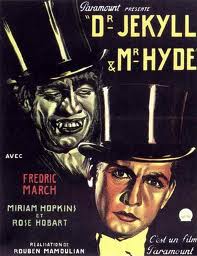
Dr. Jeckyl and Mr. Hyde (Poster from the classic 1931 adaptation with Frederick March)
A week later, Persona #2 is in Baltimore at an elegant lakeside hotel, refreshing his certification with the American Association for Laboratory Accreditation (A2LA) as an inspector for the international ISO 15189 standard for medical laboratories. A2LA is taking on the thousand-pound gorilla of the College of American Pathologists, introducing a new standard for medical laboratory accreditation into the USA. No work as yet, but international labs waiting in the wings to join the parade once A2LA’s certification passes government logjams thrown up by established powers. Week spent on Estimation of Measurement Uncertainty analyzing concepts like this:

as well as document management procedures, traceabilty of measurements to international standards, and much more to do with certifying diagnostic quality. I am helping to pioneer a new venture for American medicine.
My highest cortical functions have had their workout for a week. Ten hours on a plane, blazer folded in the closet at midnight, don Persona #1. Scan the Maxie’s preflight checklist, four hours in bed, and back to the world of drive shafts, hitches, and a growling Diesel.
IT IS COMING TOGETHER…
Out without a load on Victoria’s winding streets, practicing shifting and clutch work. First, second, third, fourth, ranger up, fifth, sixth, then all the way back down again. Not as smooth as Larry, who shift gears like a Chinese master doing water colors (green, pink, brown and black on fours sides of a round brush, then one quick twist of the wrist and a flower graces a page of rice paper) but smooth enough, and no bucking or heaving.
The next day, the challenge I have been dreading: out on the same narrow corners and byways with 50,000 pounds of truck and concrete blocks. Last time, the truck bucked and heaved like a clipper in a heavy sea whenever I started out. A week off has allowed knowledge to settle, however. This time, whenever, Maxie protests, I quickly engage the clutch and tell him to get to work. He likes this new-found mastery, and we move smoothly up hills and through gullies. I have time to watch the traffic more closely and manage a serviceable buttonhook turn in dense traffic, a complex but essential maneuver where one must signal right, then at the last minute move left, simultaneously blocking the right lane with the trailer and occupying the left lane with the cab, before moving wide around the corner, missing curbs, pedestrians, and telephone poles. At an ice arena parking lot, I manage an alley or “Jack” backup, moving the trailer backwards around a 90 degree corner, without being too badly out of position. I will be a trucker yet.
Next week, off to Alberta to look for work.
ON THE LAUNCHING PAD:
Just as it did for the thousands of English and Irish emigrants who populated Newfoundland two centuries ago, the morning comes when it is time to leave for a new land. Work looms before I can leave home, however.
A hectic last month; falling in love with 0.4 acre of Cowichan hillside, we inherited a view of rolling hay fields brooded over by the dark mass of Mt Prevost. With the view and the hillside, we also acquired several hundred metric tons of densely obstinate shale, demurely hiding beneath the thinnest veiling of soil. Needless to say, gardening is akin to breaking lumps in a Welsh coal mine, and our lawn stays green only by dint of intravenous nourishment and its proximity to the septic field. Getting the garden brushed and combed and ready for spring: an arduous task, but finally ready for the lawn service to take over.
My seven year project to create a storage gallery and wood shop in the garage reaches completion, and a car moves in and makes its home. Mail, accumulating in the corners of the office like dry leaves on the porch, must be processed and shredded. Vacuuming, lunch-making, and packing fill the night till early morning. Five cameras? Film? Three pairs of underwear? Restoration tools? Jeans? I’m packed. New persona, new life, new beginnings – frightening but exciting. Many of my peers are watching television and playing golf. Despite occasional envy of their relaxed lifestyle, I realize I feel alive, and happier than I have been in years. Finally, a challenge, an adventure, and life in motion…
THE DAY OF DEPARTURE:
Morning: Moving, a rustle, rattle, and crackle reaches my ears. Knowing that that the range of the Northern Pacific Rattlesnake (Crotalus oreganus oreganus) does not include Vancouver Island, I cautiously open one eye to find Janie asleep beside me on a layer of mail.

North Pacific Rattlesnake
Accustomed to awakening to find knitting needles and other sharp objects sharing my resting place, I cautiously ease out of bed and remove the offending literature. A cup of strong coffee brings my lifemate to consciousness, and we scurry through a morning of final preparations, ferry schedules, and last minute paperwork.
As we back down the driveway, I feel both anticipation and a sense of apprehension: a 65 year old doctor/photographer turned trucker- will anyone take me seriously?. Calls placed to major petroleum companies, and Flint Energy, largest of the equipment haulers. Web sites: Lists of benefits and testimonials from happy workers. Please use our on line service. Resume submitted as requested. No answer. Consider resume: medical director of this, consultant on that, trucker…TRUCKER??? Is this some kind of joke? What did he do??? Abscond with the piggybank? Auction off the Percocet on eBay? Stereotype: Doctors don’t drive trucks, they retire to the Bahamas and play golf. I decide to present my resume in person whether they want to talk with me or not.
ADVENTURES ON THE TRAIL:
We leave the Fraser Valley in pounding rain and gloomy gray overcast,, crawl up the long climb of the Coquihalla Highway, rain turning to a blizzard as we twist and turn between huge piles of muddy roadside snow. Stopping gratefully at the only rest stop in miles, we munch celery as we contemplate this depressing landscape. Suddenly a little while Nissan zips to a stop beside us, a young Asian man jumps out, a multicolored bouquet of flowers in his hand, and a bride with full wedding regalia and flowing black hair leaps out the other side, and they scamper off down a narrow aisle walled by towers of gravelly snow. My photographers antennae a-twitch, I am out of the car and tearing off in full pursuit. Following this elfin couple (at the start of a delayed honeymoon) yields a fascinating sequence of images as they cavort from snow pile to snow pile, and finally pose for me (see The Bride at the Summit):
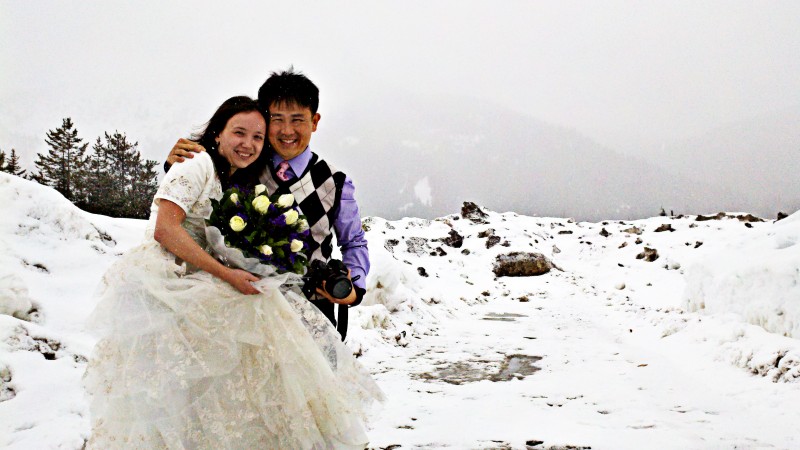
The Bride at the Summit #5 (Droid Digital Image)
The wide grasslands of the Nicola Valley, coffee in Merrit, the Rogers Pass in a freak winter snowstorm (truckers crawling, car over the bank, one death), then time to explore Lake Louse and Banff, fondly remembering a second honeymoon spent here. Today, I am just savoring the fact that Janie can walk after four years of orthopedic disasters.
At an underground mall in Banff, an opportunity I cannot resist: among the fudge shops and racks of kitchy souvenirs, an underground bar and pool hall, dim light, and a group of colorful but slightly rough-looking males assaulting small balls with sticks. After some hesitation (I am a shy people photographer) I introduce myself as a writer doing an article on cell phone photography and escape with several images.
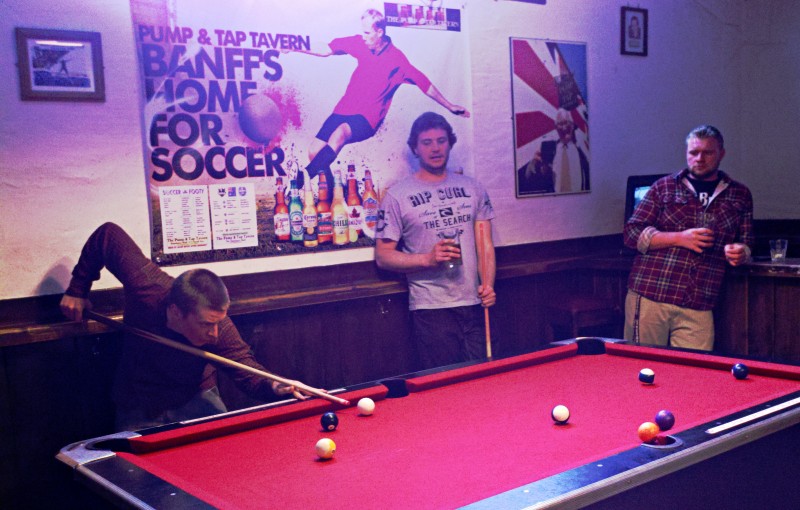
The Pool Hall (Droid Digital Image)
Challenging conditions for the little Droid camera with its love of bright Caribbean sun, but I push it to the max and one image passes the difficult lighting conditions with considerable tweaking of contrast, saturation, and curves in Photoshop. This would be an extremely difficult shot with a 1940s roll film camera, and one would be struggling with a wide open lens (limiting depth of field) and slow shutters speeds (failing to catch the quick movements as the pools aces quickly align their shots). Here, the Droid’s extreme depth of field is an asset.
CALGARY:
Two days Alberta St. John Ambulance First Aid, one day Hydrogen Sulphide Safety course, on-line Petroleum Safety Training….. and all the networking and potential-employer-visiting I can cram in over the rest of the week. Life may be transformed based on what I learn.
SAFETY TRAINING DAYS:
St. John’s Ambulance: Resuscitating an unconscious choking baby: Place baby face down on arm. Whack baby five times on back. Flip baby over. Poke baby five times in chest with second and third fingers. Blow in (snotty?) mouth and nostrils twice. Repeat as need until baby wakes up or help arrives. One of the few times it is legal to hit your children.
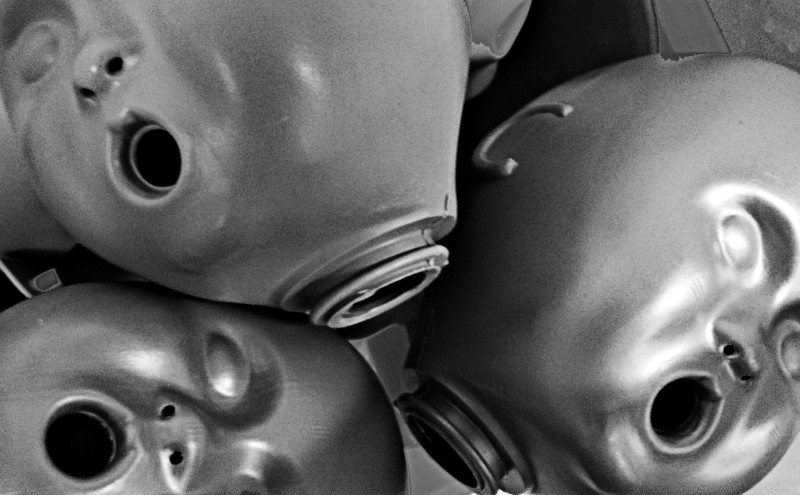
Baby Dummy Heads, St John's Ambulance
Dealing with Stroke (Versus TIA). Open fracture of the arm. Sucking chest wounds. Amputations, Partial versus Complete. Not good after-dinner pictures. Chemical burns. Avulsion of the eyeball. A realistic picture of an eyeball hanging out of a socket. I know it’s realistic, because I’ve seen one just like it. Time for lunch.
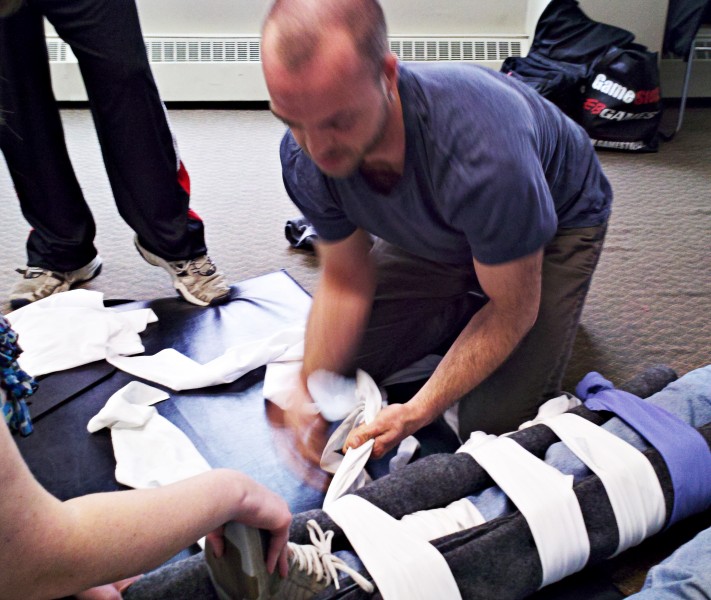
Splinting the Tibia
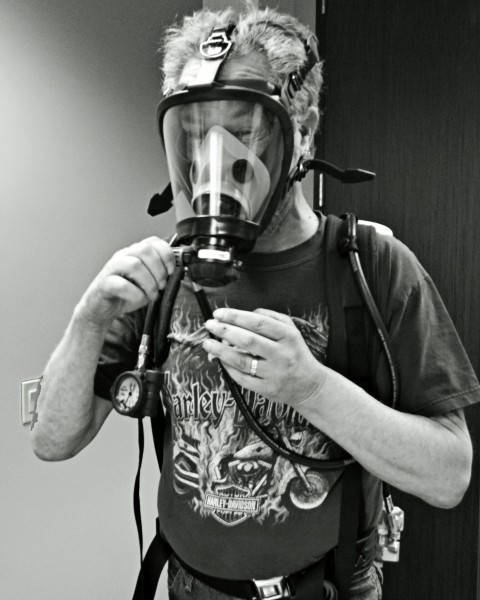
Respirator Training - A Fellow Student

Wineglasses, Calgary Hudson's Bay
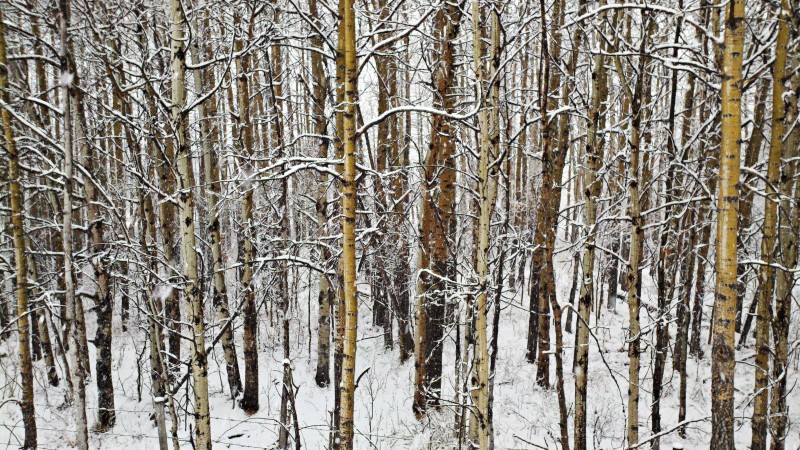
Alberta Poplars, Spring Snowstorm
Farther on, that afternoon, a panorama of horses scattered over snowy hills beneath a leaden sky:
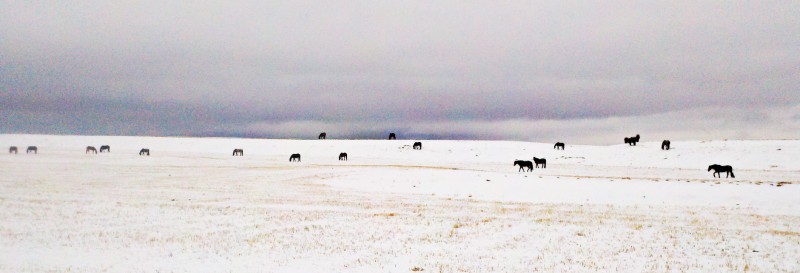
Horse Herd, Alberta Snowstorm
First Interview: Sprawling industrial area southeast of Calgary. Past the distillery, air fragrant with the aroma of mash and yeast; one could get high just breathing. Tired-looking box of a building, just down the street from a crane’s giant arch over twisted car hulks and crumpled girders, a city block disappeared under metal and scrap:
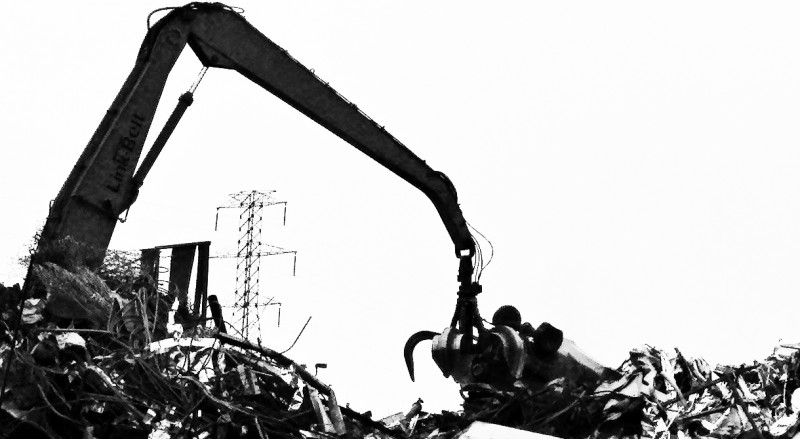
First Interview - the Neighbourhood
Four guys in greasy jeans in an old office. Check out the company: Are the plants healthy? They might be if they like distillery fumes and anyone had thought of them. My target is the youngest. Nice enough, but clearly puzzled by why I’m here. Penthouse screensaver. I pass over my resume. “Seems like you ought to be teaching at a university. I’ve got to tell you that I have a pile of resumes from guys with years of experience. The oil fields are no place for a new driver.”
The next day, I meet with Darryl Faye from Finney Specialized Hauling. Much the same message, but from a kind manager who spends half an hour in a very busy day giving me suggestions: ” I have guys who have trained with us for three years that I won’t let touch some of the projects we move. You need six months of basic hauling experience before you set foot in the oil field. But good luck, and let me know how it works out.” Clearly, I am starting at the top and need to get experience with the basics.
Some valuable connections before we leave Calgary: an appointment with the Alberta Government job service (revise your resume – it’s too medical) and an exhilarating networking group at the library, which yields me a connection to a coach who is brightly enthusiastic about my background, and a recommendation to a new coach in Victoria.
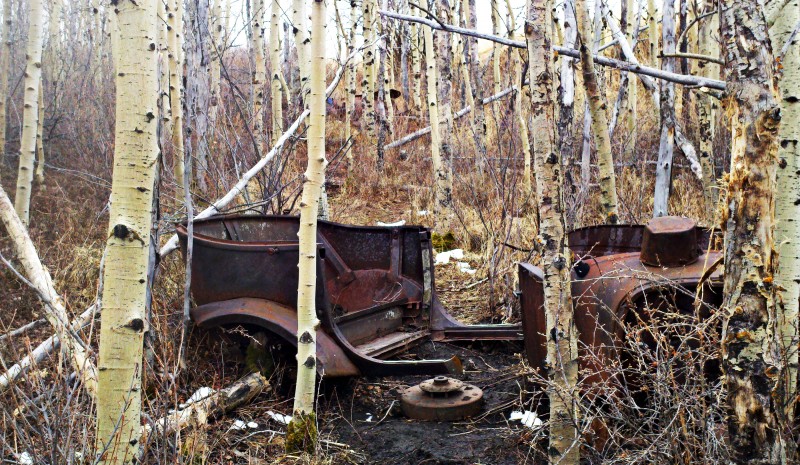
The Ford in the Poplars (Droid Image)
A last walk through the poplar groves of Alberta, past an old Ford, rusting amid the pale columns of tree trunks, then back through the grandeur of Yoho and Glacier parks, the Rogers Pass, and the rolling brown ranch lands of central British Columbia.
REFERENCES:
Kalusche, H.E. Hydrogen Sulfide – Health Effects, Detection and Exposure Prevention. U.S. Army Workshop Online Notes. http://el.erdc.usace.army.mil/workshops/04jun-wots/kaluschue.pdf.
The Jeckyll and Hyde Laboratory. On Line Posting. http://jekyllhydelab.blogspot.ca/2011/03/jh-resources-full-length-movies.html.
To Be Continued…
